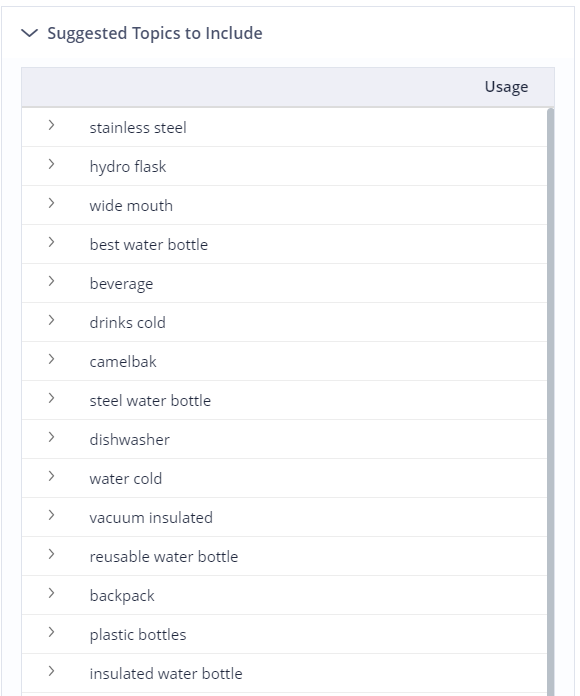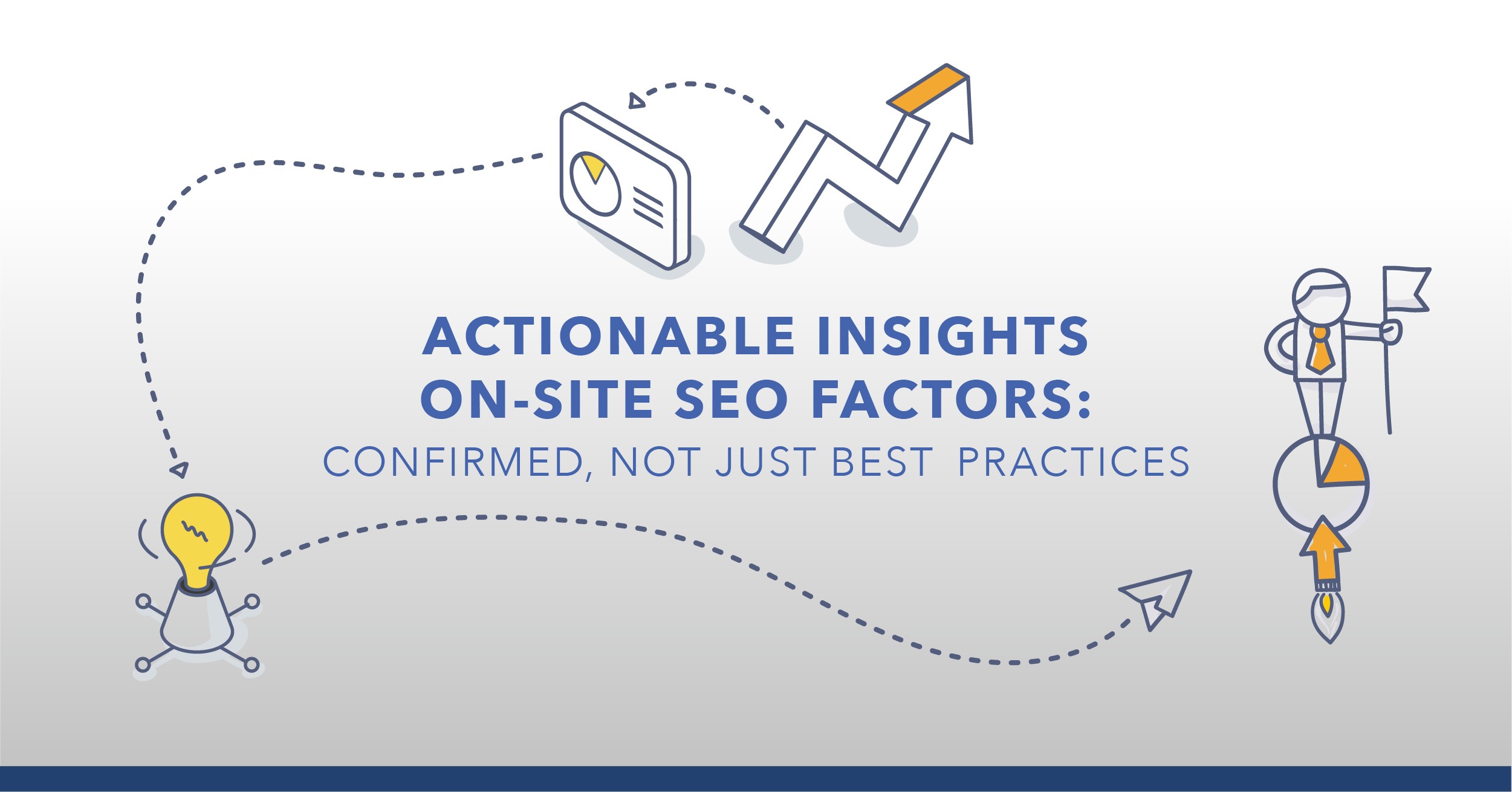Are you trying to improve rankings of a large scale website? Want to understand the concepts of enterprise SEO to make it happen?
SEO has always been one of the pillars of digital marketing. The majority of marketers, for example, see the strategy as more effective than PPC. And for more than half, improving organic rankings is the top inbound marketing priority.
But - let’s face it, optimizing a typical business website is one thing. Trying to rank a ginormous enterprise site is something completely different.
In this guide, we focus on enterprise search engine optimization. You’ll learn what it is, and what takes to rank and improve organic search results and traffic for an enterprise website. Specifically, we’ll discuss:
- What is Enterprise SEO?
- What makes enterprise SEO different from standard SEO?
- The most critical enterprise SEO strategies
What is Enterprise SEO?
At first glance, enterprise SEO doesn’t differ from any other type of SEO that much. Your goal is the same: to rank content for high-value keywords and attract organic traffic.
You use many similar strategies as your colleagues too. You conduct keyword research, eliminate technical issues, create SEO content, and optimize it for target search phrases, build links to boost its authority, etc. In many cases, you even work with local SEO, similar to smaller businesses.
So, what makes enterprise SEO, well, enterprise?
First, you are dealing with a different type of website. Whereas other SEOs might be optimizing sites with hundreds of pages at most, you’re dealing with what Martin MacDonald, one of the experts on the topic, calls an “800-pound gorilla which is, you know, a website that might have ten million or fifty million pages.”
Such a website brings a large number of pages, products, and other assets to optimize, monitor, and work with. As a result, all the typical problems you’re facing in SEO - technical issues, content issues, crawling, and indexing gets magnified to an incredible extent.
You can hear Martin discussing the issue at length in this video:
The other difference is having to deal with many stakeholders and internal politics to get stuff done. In a small business, SEO is often part of a smaller marketing team, with very little influence or collaboration with other departments.
When you work for a large company, though, you have to deal with a board of directors, multiple stakeholders, and departments on every part of the site. In order to make any updates, you need to employ diplomacy and overcome red tape, get buy-ins, and prove your value.
One other result of the above is a stronger focus on metrics and reporting in an enterprise setting, to prove your work’s value and align other stakeholders to your vision.
So, bringing it all together, we can define enterprise SEO as:
A practice of optimizing a large-scale website for organic search while navigating a typical corporate environment’s hurdles– red tape, diplomacy, and internal politics - to get stuff done.
Here’s how to make it happen in practice.
Enterprise SEO Strategies: The Foundation of Enterprise Search Engine Optimization
Let’s dispel a myth here: there aren’t any SEO strategies unique to large companies only. Keyword research or link building work pretty much the same for large and small organizations. It’s how you utilize SEO strategies within enterprises that’s different. You’re optimizing a much larger website, after all. The work you must do, therefore, gets multiplied by the size of the site.
Below, I’ve listed all the foundational elements of a typical enterprise SEO strategy and discussed how to utilize them in a large company setting.
#1. Optimizing the Site’s Architecture
For Google to rank your content, it needs to be able to find it first. The search engine must also access, render, crawl, and index those pages.
You achieve it by building a well-thought-through site architecture, where all the content is easy to reach within the allocated crawl budget.
Now, the above can prove challenging even for SEOs who have to deal with hundreds of pages only. But you have to optimize the large scale site architecture to include hundreds of times more assets to ensure crawlability and indexability of all the content.
Therefore, a critical aspect of your work as an enterprise SEO is to develop the site architecture and create a complete internal linking strategy to ensure full indexation of content and much more.
Where to Learn More:
- A Guide to Site Taxonomy and Its Effect on SEO
- Internal Linking: Best Practices to Lift Your SEO Game
#2. Conducting Focused Topic and Keyword Research
Without a doubt, keyword research is one of the most essential search engine optimization activities.
To drive organic traffic, you must first identify topics your audience cares about. You must then discover what search terms and search queries your customers use to find various information on their topics of interest and their intent behind each search.
In short, keyword research is your gateway to understanding how the very people you want to attract to the site search for information and creating a roadmap to position the brand along their journey.
In practical terms, keyword research involves identifying high-value words and phrases to create content to get the websites in front of the target audience.
However, in an enterprise setting, you have to deal with more than a vast number of search phrases. You might also understand how customers search in different locations across the globe and utilize that knowledge in your content marketing strategy.
We've talked about our methodology extensively in the past, and have included a reading list for research below.
Where to Learn More:
- How to Do Keyword Research for SEO: An Enterprise Guide
- 5 Modern Keyword Research Techniques You Must Consider
- Niche Keyword Research: Choosing the Best Terms in a Low Search Volume Industry
- What Users Want: Dissecting the Challenge of Matching User Intent to Keywords
- Looking for Long-Tail Keywords? Here's How to Find and Use Them
#3. Competitive Research
Another strategy that helps you win at enterprise SEO is keeping track of what your competitors are doing. I don’t believe that it is possible to grow search visibility without understanding what drives your competitors’ success.
My colleague, Ryan Heuser, defined competitive research wonderfully as:
[...] a process of a) understanding who your actual online competitors are, and b) identifying what specific words or topics drive their success.”
But the benefits of conducting competitor research go far beyond figuring out what phrases you are missing in your strategy.
- Analyzing competitors’ search terms will help you better understand how customers search for information related to your products.
- The above, in turn, will help you identify new potential initiatives to take. Again, it could be a significant, long-form content guide that you decide to create or a content hub you’ll create to dominate a specific topic.
- You might also spot content gaps during the process - Topics and keywords the drive your competitors’ traffic, but you’re not targeting yet. This can be a great low-hanging fruit to drive your SEO forward.
- Finally, analyzing competitors’ strategies can reveal many link building opportunities that you could recreate and use to outrank those companies.
When conducting a competitive analysis, you identify who you’re fighting against in Google, what phrases those domains rank for already and build on those phrases to identify new opportunities.
As part of the process, I also recommend comparing top competitors' words to identify the most important phrases in the industry to understand the audience’s interests better. You can do this by comparing the top termss between two or three competitors to find common phrases they rank for.
To do this, I rely on Content Gaps.
I like to start by identifying terms where my competitors rank, but I do not yet rank. It's as simple as comparing two or more domains against my own search terms. Below is what you find in a content gap analysis between two competing domains.

Although both domains share a significant number of keywords, the platform estimated the potential at almost 5 million!
This isn't to suggest that you have to target all those terms; however, by analyzing the content gap further, you uncover great opportunities to increase your online visibility.
Where to Learn More:
- How to Use Competitor Keyword Research to Plan Better SEO Campaigns
- Discover Your Competitors' Keywords in 5 Easy Steps
- My Competition is Conquesting My Brand Terms - What Do I Do? Tackling Competitive Paid Search
#4. Writing SEO Content
Content is the backbone of the majority of SEO strategies. Much of your work relates in some way, at least, to the process of creating an SEO-focused content marketing strategy that can deliver higher rankings and greater traffic.
Writing SEO content involves creating content assets that prioritize the experience of a searcher. Such content is relevant to the search queries customers use when looking for that information, and matches their intent for conducting such a search.
But creating an SEO-optimized copy is more than just including relevant words on a page and in the meta tags. To create a well-optimized and relevant piece of content, you must consider the needs of people searching for this information, and leverage that to build an asset that delivers, and ideally, exceeds their expectations.
You must also structure the piece to include what Google considers to be the most critical information to match the user’s intent.
In general, the SEO copywriting process includes the following elements:
- Keyword research,
- Competitive research,
- SERP analysis,
- Content audits,
- Outlining and content planning,
- Content writing,
- On-page content optimization,
- Internal link building,
- Content distribution,
- ... and more.
As you can see, much of the process revolves around research and analysis to gather the data necessary for creating high-quality content that both Google and users would love.
You can uncover a lot of this information by analyzing the SERP. However, the process can be tedious and time-consuming.
The alternative is to use a dedicated AI content writing and analysis tool like Content Fusion. Such a tool will analyze hundreds of data points relating to the target term and deliver insights at a scale fit to power your content strategy.
To harness its power, users of the platform can navigate to Content Fusion and receive immediate recommendations for a specific word or page they are trying to optimize.

(Start by receiving content recommendations for a word or specific page.)
Content Fusion speeds up the research process for content writers by displaying semantically related topics along with relevant topic suggestions based on search demand (pictured below). From there, a content marketing team works to optimize existing content to improve overall authority.

(Must-use topics for the keyword "best water bottle brand.")
Lastly, it's important to keep content distribution as part of your content marketing strategy; sharing content on social media or via email newsletters are simple, yet common distribution methods.
Where to Learn More:
#5. Technical SEO
Websites evolve naturally. It doesn’t matter whether you work with an enterprise site or optimize a small business’s online presence; the website you manage will grow and expand over time. Unfortunately, as a result, technical issues might arise that can prevent search engine crawlers from accessing, crawling, and indexing the site’s content or hinder your efforts in other ways.
And naturally, the larger the site, the more issues you might encounter.
Technical SEO is a vast search engine optimization area that aims to identify and eliminate those issues, ideally before they cause problems.
When working with technical SEO, you conduct regular site audits, optimize the site’s speed, work with the internal linking structure, implement Schema.org markup, manage redirects, optimize JavaScript and other scripting languages SEO, and even ensure the correct on-site and on-page optimization.
The process of optimizing technical issues also involves working closely with IT and development teams. Many of the issues you identify will relate to the actual code and build of the site, rather than its content, after all.
As a result, you must prioritize technical tweaks and manage technical debt when optimizing an enterprise site.
Where to Learn More:
- 15 Common Technical SEO Issues and How to Solve Them
- Get Out of the Red: How to Overcome Technical IT Debt for SEO
- 14 Common Issues with the Robots.txt File in SEO (and How to Avoid Them)
- REDIRECTS FOR SEO: The Ultimate Guide to SEO Redirects
- 7 Common Issues with Implementing Structured Data
- How seoClarity Automates Your SEO
#6. Link Building
Link building isn’t always the top-focus SEO strategy for enterprise brands and a reason. Given your brand’s popularity and media coverage, the domain will most likely receive a good number of new links each month.
However, it shouldn’t be a strategy to ignore completely.
For one, you should monitor and analyze your link profile, even if only to ensure no potentially harmful links pointing to the domain. These links could result in a Google penalty unless you disavow them, after all, and it’s a good practice to look out for them regularly.
Auditing external links will also help you boost search visibility by:
- Identifying which sections of the site attract the most links, and which ones are under-linked.
- Identify potential threats in your link profile.
- Assess the overall quality of your link profile, and compare that with your competitors.
You might also want to rank for a highly competitive, high-value keyword. In most cases, you should get on the first page of the SERPs based on the quality of content alone. However, there might be a situation where you’d need to boost the ranking page’s content authority. To do that, you might need to build more links.
Link building involves focusing on different strategies, from creating linkable assets that earn links organically, to using outreach to secure link placements on third-party sites.
Where to Learn More:
- Backlink Management: Everything You Need to Know to Manage Your Links
- 9 Backlink Strategies to Boost Your Rankings in 2020
- The Most Effective Link Audit Process to Boost Search Visibility
- Want to Earn High-Quality Backlinks? Here’s What You Need to Know.
- Link Profile Analysis: How to Maintain a Clean Backlink Profile
Key Takeaways:
- SEO is one of the most critical elements of modern marketing.
- Enterprise SEO focuses on optimizing and ranking a large scale website with thousands or more pages to monitor, track, and manage.
- Enterprise SEO includes the same strategies as other types of SEO, however, these are done at a much larger scale.
- The foundational elements of enterprise SEO are creating strong site architecture, keyword research, competitive research, SEO content writing, and technical SEO.
- To deliver results, you must use an enterprise SEO platform capable of managing large data sets that your strategy requires.







Comments
Currently, there are no comments. Be the first to post one!